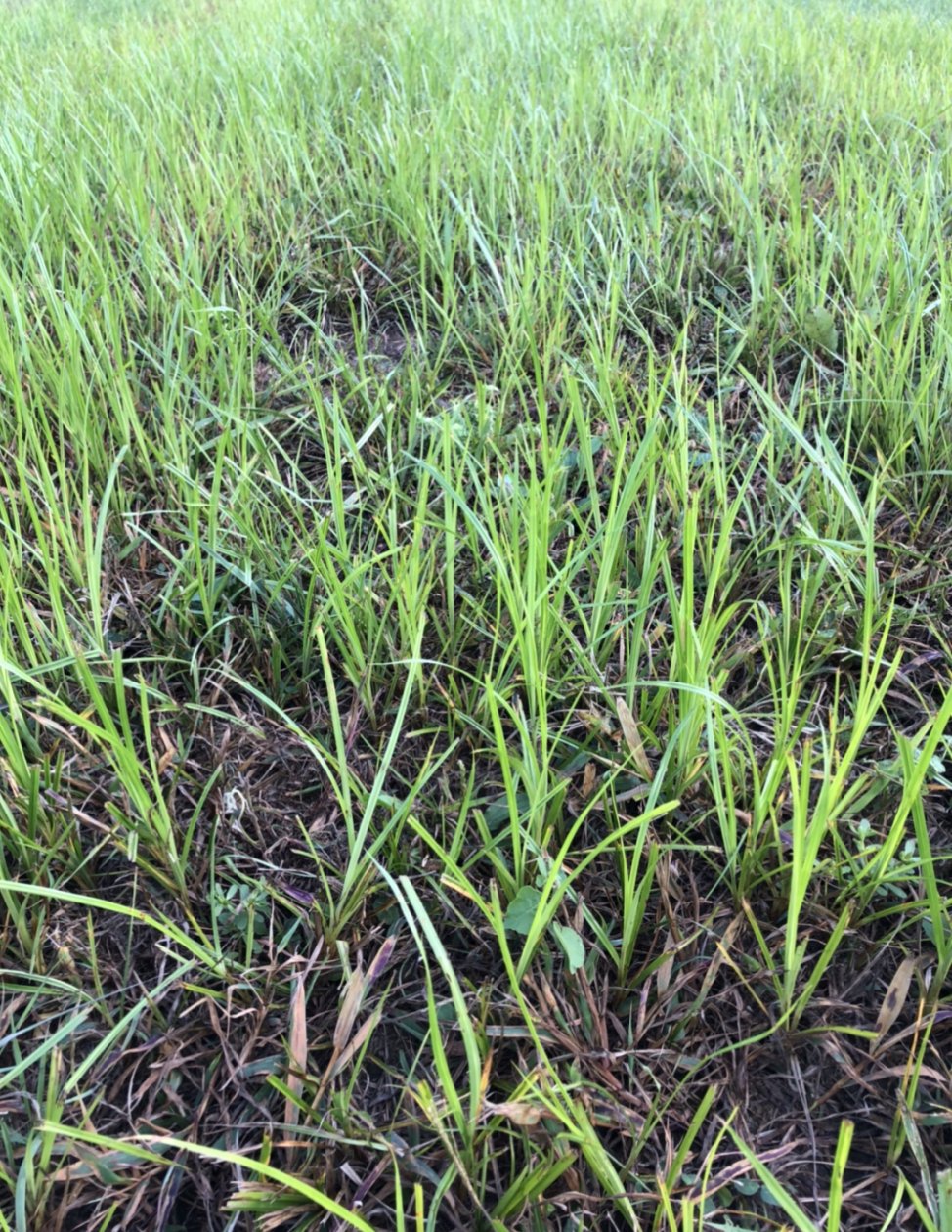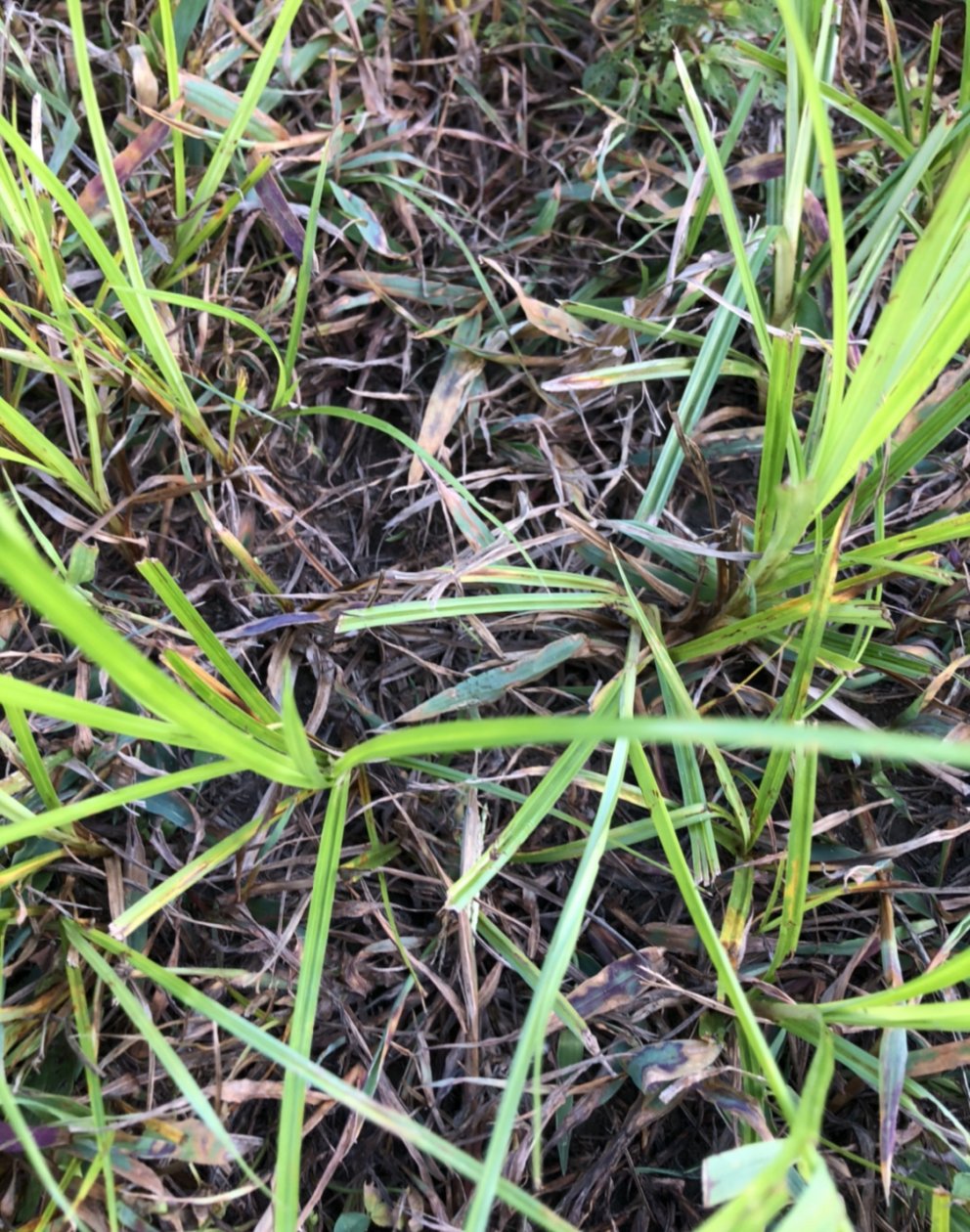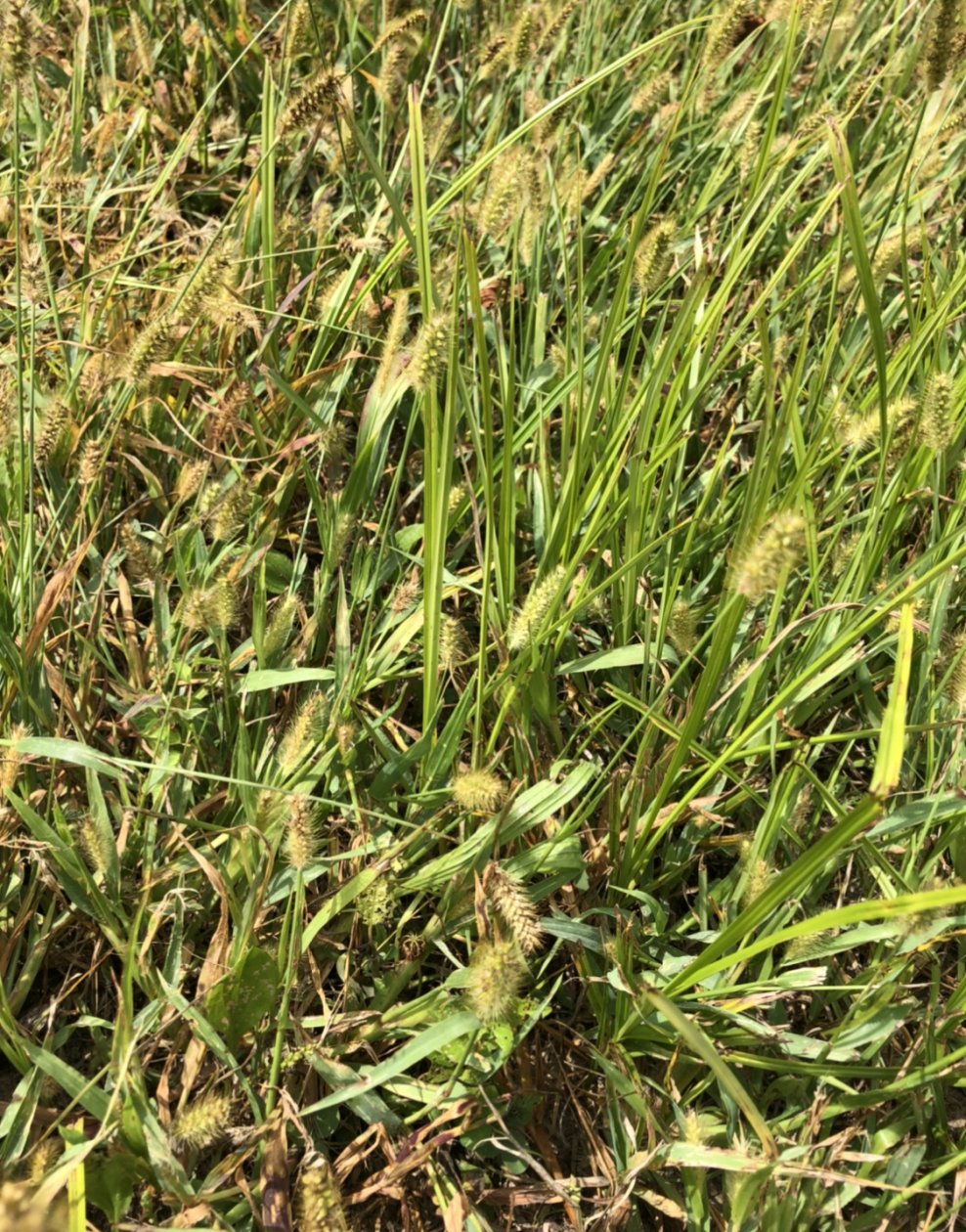

You are using an out of date browser. It may not display this or other websites correctly.
You should upgrade or use an alternative browser.
You should upgrade or use an alternative browser.
deep woods goat hunter
PMA Member
Made this vid today to show variety of switch field. Can see spots coming in like crazy & some Areas not coming in much. Some areas with weed pressure & some without. Reminder- don’t spray 2,4-d unless switch is at least 6” tall & several stems. For my example here- I’d simply mow. & last reminder- if u don’t see some yet- don’t worry. It’s coming or u will know in about 2-3 weeks. If u way up north, could add week or two to calendar. This was planted late winter & first that’s up. Some other spots aren’t up yet but they coming.
Thanks skip, im saving this for archives
Sent from my iPhone using Tapatalk
titan23_87
New Member
Dosed my first year frost seeded switchgrass field last week with quinclorac and MSO at Skip’s recommendation. I’ve been over run with crabgrass, foxtail, and yellow nutsedge.
The Herbacide has done a good job from what I can tell. As you can see the nutsedge is not phased. I’m going to mow again specifically in areas where weeds have gone to seed and to knock down the nutsedge again.
I’m hoping before the Fall I’ll be able ID my first switchgrass seedling.
The Herbacide has done a good job from what I can tell. As you can see the nutsedge is not phased. I’m going to mow again specifically in areas where weeds have gone to seed and to knock down the nutsedge again.
I’m hoping before the Fall I’ll be able ID my first switchgrass seedling.
Attachments
titan23_87
New Member
For those looking to Fall spray existing warm season grass fields, is there a certain soil temperature it should be down to, to ensure switchgrass, etc is in fact dormant?
I’ve heard 2 weeks after the first frost, however just checking if there was a better way to be sure....
I’ve heard 2 weeks after the first frost, however just checking if there was a better way to be sure....
Austin
Member
I was curious on this as wellFor those looking to Fall spray existing warm season grass fields, is there a certain soil temperature it should be down to, to ensure switchgrass, etc is in fact dormant?
I’ve heard 2 weeks after the first frost, however just checking if there was a better way to be sure....
Cool season grasses love 50-65 degree soil. That’s when they are actively growing so ideal time to kill. Germination on warm season seed is 60’s into mid 60’s. I am going to guess that when u get sustained soil temps below 55-60- ur safe when it comes to established plants going dormant.
without the exact sustained soil temp for when autumn dormancy occurs for NWSG’s.... let’s makE this ALMOST as simple...... it’s likely going to be in OCTOBER (say central iowa for example). 2nd - if ur sustained soil temps are in that 55 or slightly under range - u will see this and likely be fine..... before spraying ..... inspect plants at different parts of field when all previous conditions have been met. Different soil types, sunlight, etc will have plants going into dormancy at slightly different times. So just inspect to make sure they are all dormant. Doesn’t take long & easy to confirm & in any situation- would be crazy not to confirm.
So- OCTOBER _____ & sustained soil temps 50-55 degrees, confirm warm seasons are dormant - SPRAY.
without the exact sustained soil temp for when autumn dormancy occurs for NWSG’s.... let’s makE this ALMOST as simple...... it’s likely going to be in OCTOBER (say central iowa for example). 2nd - if ur sustained soil temps are in that 55 or slightly under range - u will see this and likely be fine..... before spraying ..... inspect plants at different parts of field when all previous conditions have been met. Different soil types, sunlight, etc will have plants going into dormancy at slightly different times. So just inspect to make sure they are all dormant. Doesn’t take long & easy to confirm & in any situation- would be crazy not to confirm.
So- OCTOBER _____ & sustained soil temps 50-55 degrees, confirm warm seasons are dormant - SPRAY.
titan23_87
New Member
Cool season grasses love 50-65 degree soil. That’s when they are actively growing so ideal time to kill. Germination on warm season seed is 60’s into mid 60’s. I am going to guess that when u get sustained soil temps below 55-60- ur safe when it comes to established plants going dormant.
without the exact sustained soil temp for when autumn dormancy occurs for NWSG’s.... let’s makE this ALMOST as simple...... it’s likely going to be in OCTOBER (say central iowa for example). 2nd - if ur sustained soil temps are in that 55 or slightly under range - u will see this and likely be fine..... before spraying ..... inspect plants at different parts of field when all previous conditions have been met. Different soil types, sunlight, etc will have plants going into dormancy at slightly different times. So just inspect to make sure they are all dormant. Doesn’t take long & easy to confirm & in any situation- would be crazy not to confirm.
So- OCTOBER _____ & sustained soil temps 50-55 degrees, confirm warm seasons are dormant - SPRAY.
Skip- is there a way to identify that the plant is dormant by inspecting, ie what to look for, etc?
hillrunner
PMA Member
Solid brome, fall killed (100% kill), burned. Basically perfectly clean seed bed. I've seen similar results in multiple soil types. Going forward, either going to drill or do light tillage and broadcast.
Going back to this post. I just killed off 6 acres of brome grass today. It was hayed this summer so most of it is pretty short I doubt I could get a good burn going and I'm reluctant to burn when its this dry out. I'm contemplating 2 options. One way will be to mow as low to the ground as I can and use a no till drill to scratch it through the thatch this winter. The other idea is to follow your suggestion here and give it a light disking and broadcast the seed this winter. We're pretty dry here and I've never tilled ahead of switch before. With your experience with tillage, would you still go ahead with the disk this fall?
I vote no on disc/disk. Stirs up foxtail, Crabgrass & some broadleaves. & takes the little bit of residue u kinda want “just enough of” & gets rid of that. My vote is not working it. No till in or broadcast in and spend that extra time, $ & effort on some extra sprayings.Going back to this post. I just killed off 6 acres of brome grass today. It was hayed this summer so most of it is pretty short I doubt I could get a good burn going and I'm reluctant to burn when its this dry out. I'm contemplating 2 options. One way will be to mow as low to the ground as I can and use a no till drill to scratch it through the thatch this winter. The other idea is to follow your suggestion here and give it a light disking and broadcast the seed this winter. We're pretty dry here and I've never tilled ahead of switch before. With your experience with tillage, would you still go ahead with the disk this fall?
#1 choice: no till drill.
#2 choice very light till but not now. In march when ground isn't frozen
#3 choice frost seed.
Done all three including some side by side stuff that are buried way up in this thread.
Proper chemical application required regardless
Sent from my SM-G965U using Tapatalk
#2 choice very light till but not now. In march when ground isn't frozen
#3 choice frost seed.
Done all three including some side by side stuff that are buried way up in this thread.
Proper chemical application required regardless
Sent from my SM-G965U using Tapatalk
hillrunner
PMA Member
#1 choice: no till drill.
#2 choice very light till but not now. In march when ground isn't frozen
#3 choice frost seed.
Done all three including some side by side stuff that are buried way up in this thread.
Proper chemical application required regardless
Sent from my SM-G965U using Tapatalk
So with the no till drill route or light tillage route, you are not frost seeding? Early spring planting then?
I'm not a novice at establishing switch, but I was intrigued by your side by side comparison showing the tilled strip of ground versus not and I've kept that info on the back of my head ever since.
I've always followed paul's method of killing it in the fall, burn if necessary, frost seed around February, gly and atrazine in the spring. It's straight forward and it works but I'm always open to a better way.
I usually plant during the freeze thaw time in March. Lots of freeze thaw days left then. Still frost seeding really.So with the no till drill route or light tillage route, you are not frost seeding? Early spring planting then?
I'm not a novice at establishing switch, but I was intrigued by your side by side comparison showing the tilled strip of ground versus not and I've kept that info on the back of my head ever since.
I've always followed paul's method of killing it in the fall, burn if necessary, frost seed around February, gly and atrazine in the spring. It's straight forward and it works but I'm always open to a better way.
Sent from my SM-G965U using Tapatalk
How old is the stand? What variety? What type of soil is it on? Did it ever look "odd"... Odd coloring or anything different looking on switch?Is anyone else experiencing crappy existing switchgrass stands the last two years? Even after burning it hasn't come back either year in various fields for us.
Sometimes there's fungal issues, disease issues, etc. Certain types can peter out... I recall maybe varieties like Nebraska, Blackwell, Alamo, etc??? I have to dig back into this thread or dig back into the brain archives. Fire back on these 4 questions though 1st.
titan23_87
New Member
Time to spray?
Look at plants. Are they dormant?View attachment 119953
Time to spray?
Sligh--
Stands are 4 years old. We have over 60 acres of it in various fields that have been burned once split up equally the last 2 years in the spring. The first 2 years before burning, they were good, but last year and this year they are not.
Nebraska 28- we think that may be the problem perhaps
Soil is mixture, a lot of clay- native fields all around the switch fields are all awesome with same planting dates and same burning schedules
Most of the switch seems to be about 75% golden rod and a little switch--still very good cover for birds etc.
Thanks for your reply, I was just trying to see if anyone had this issue thinking maybe a disease or weather this year may cause it.
Stands are 4 years old. We have over 60 acres of it in various fields that have been burned once split up equally the last 2 years in the spring. The first 2 years before burning, they were good, but last year and this year they are not.
Nebraska 28- we think that may be the problem perhaps
Soil is mixture, a lot of clay- native fields all around the switch fields are all awesome with same planting dates and same burning schedules
Most of the switch seems to be about 75% golden rod and a little switch--still very good cover for birds etc.
Thanks for your reply, I was just trying to see if anyone had this issue thinking maybe a disease or weather this year may cause it.
titan23_87
New Member
Skip, pointers on telling if the plant(s) are dormant? Color, seed head?
hillrunner
PMA Member
I mowed a few acres of killed off brome this morning in prep for a late winter switch seeding. Man is it dry, you could almost trip in these cracks in the ground. I hope that changes by spring or I'll be wasting my time with the switch seeding . 


Sent from my E6910 using Tapatalk

Sent from my E6910 using Tapatalk
I checked some today. Heading towards being dormant but I wouldnt spray yet. Still some green in it. Soon. Real soon.Skip, pointers on telling if the plant(s) are dormant? Color, seed head?



